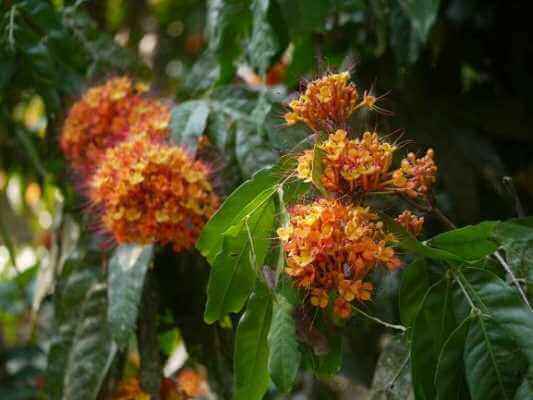Ashoka tree is also called Saraca Indica. Today I’m sharing Ashoka tree medicinal uses, important facts. Ashoka tree has multiple ayurvedic health benefits. It grows mostly in India and Sri Lanka. Ashoka tree is a traditional plant in India and it is having many medicinal uses.
Saraca Indica or Ashoka Tree Important Facts:-
- Ashoka tree is a family of Fabaceae of Saraca.
- These leaves are always in Dark green.
- And its flowers are fragrant and a cluster in orange to reddish.
- These flowers will bloom between February and April.
- Ashoka trees are mostly found in the central and eastern Himalayan mountains, in the west coast, and in the plains of Southern India.
Historical Myths of Ashoka Tree:-
- In the Ramayana, Hanuman finds Sita in Ashokavanam.
- Gautama Buddha was born under the Ashoka tree of Lumbini Forest.
- Ashoka tree flowers are one of the five arrows of Cupid, the Hindu god of love.
- Mahavira takes asceticism under the Ashoka tree in the Vaishali City.
Ashoka Tree Medicinal Uses:-
- Ashoka trees have antipyretic properties.
- The Ashoka tree barks are used to make aspirin medicines. And it helps to treat fever.
- And these tree leaves and flowers are helpful to treat skin allergies, itching, ulcers, eczema, inflammation.
- Ashoka trees have antioxidant properties. And it is helpful to make anti-cancer medicines. It is useful to prevent skin cancer.
- Ashoka tree barks are helpful to manage menstrual problems like painful menstruation, irregular menstrual cycles, uterine spasms.
- It also helps to reduce over bleeding or excessive vaginal discharge.
- Ashoka tree helps to prevent diabetics.
- It also helps to reduce digestive issues, diaresis, piles.
Read more:-
You can also check other health benefits of ayurvedic plants which are listed below; check them
- Giloy Ayurvedic Health Benefits
- Mimosa Pudica Health Benefits
- Justicia Adhatoda Health Benefits
- Gloriosa Superba Health Benefits
Post Disclaimer
The information presented in this blog post is for educational and informational purposes only. While every effort has been made to ensure the accuracy of the content, the historical interpretations and perspectives shared here are based on publicly available sources and are subject to individual interpretation.
The author does not claim to be an authority on the subject, and readers are encouraged to conduct their own research and consult academic sources for a more comprehensive understanding. The views expressed in this post do not reflect the opinions of any official institutions or organizations.






